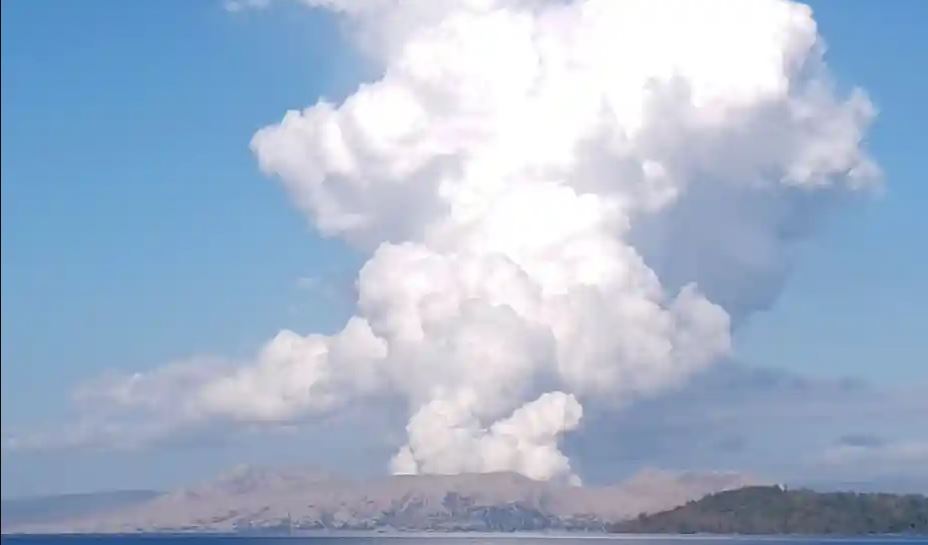On Saturday March 26, 2022, the Taal volcano, which is one of the most active in the Philippines, woke up projecting a huge plume of ash and vapor into the atmosphere.
Located about sixty kilometers south of Manila, the country’s capital, the Taal volcano takes the form of a large caldera partly occupied by a lake of the same name. In the center is a volcanic cone forming an island, the crater of which is itself occupied by a small lake.

The Taal Volcano sits on the famous Pacific Ring of Fire. It is an arc volcanism, linked to a subduction zone, which borders the Philippines. This geological context makes it a particularly active volcano, of the explosive type .
The presence of water at the level of the eruptive mouths indeed leads to violent phreato-magmatic explosions , which project large quantities of ash and gas in the form of a plume stretching up to very high altitude. Its violent eruptions are frequently associated with fiery clouds and tsunamis . Its location in a highly populated area makes it the deadliest volcano in the country.
Thousands of people evacuated as a precaution
Faced with this risk, the Philippine authorities evacuated several thousand people as a preventive measure, from the first manifestations of the eruption this Saturday.
The area located within a radius of 7 km around the volcano is indeed considered very dangerous in the event of an eruption. More than 12,000 people would thus live in vulnerable areas.
The start of the eruption was marked by a plume 1,500 meters high, raining ash over the entire region.
The scientific authorities in charge of monitoring the volcano say that the emissions of ash and gas quickly ceased after this initial explosion, but many earthquakes continue to be recorded, suggesting that a second eruptive phase could occur.
The last eruption dates back to January 2020 . The height of the plume had then reached 15 km high and lava fountains had sprung from the volcano. The ashfall had forced tens of thousands of people to temporarily flee the area.





